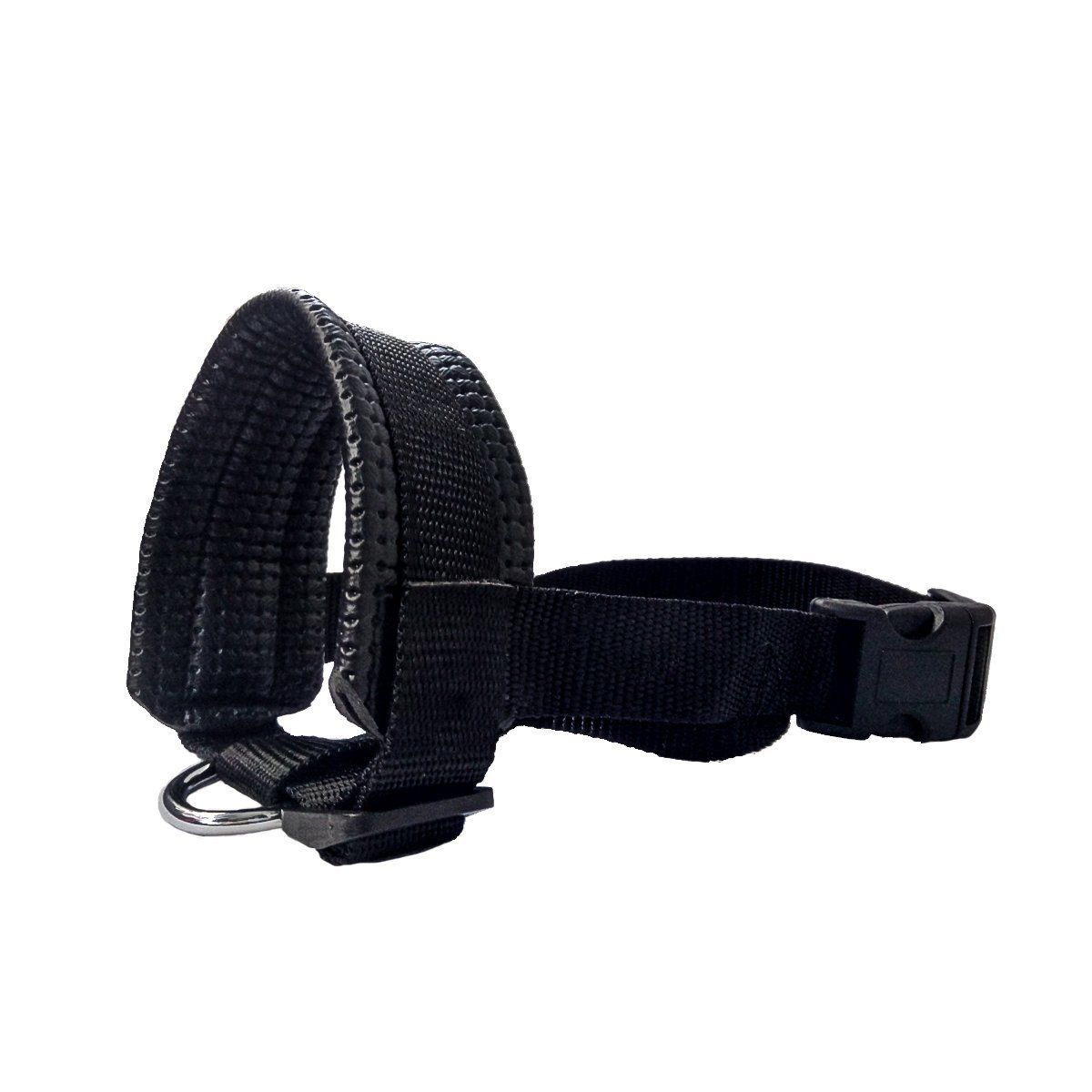
Sixty-six percent of the 6 million Australian households have at least one pet and 40% of these pets are dogs. Further evaluation of anti-barking muzzles for dogs is recommended to test the ability of dogs to drink and pant while wearing the device during hot weather, to ensure they can effectively thermoregulate. It was concluded that although dogs responded to wearing the muzzle by modifying their behaviour, including the display of submissive behaviour, and vocalisation, there was no indication that the dogs showed a stress response when wearing the muzzle. After removal of the muzzles after 43 h of treatment, the dogs in the Muzzle compared to Control Treatment tended to stand more ( P<0.06) during observation sessions over the next 2 days (48.3 versus 32.5% of observations). However, based on saliva cortisol concentrations there was no evidence of a physiological stress response to wearing the muzzles. Even in response to stimulation from humans, dogs barked significantly less when muzzled compared to non-muzzled controls (0.5 versus 23.4% of observations, P<0.01). Activity level (2.3 versus 15.7% of observations), barking (0.1 versus 7.8%) and standing posture (8.3 versus 29.5%) by dogs were significantly reduced ( P<0.05) while wearing the muzzles compared to non-muzzled controls. The initial response of dogs to wearing muzzles was to display submissive behaviour: tail held between the hind legs or down for the first few minutes only and head and tail down for the majority of time while wearing the muzzles, especially in the absence of humans. Saliva samples were collected at 2, 21 and 24 h post-muzzling to measure saliva cortisol concentrations. The behavioural responses of dogs were recorded over 4 days, from before application of muzzles (pre-treatment) to 2 days after removal of the muzzles (post-treatment period). Muzzles were removed for about 30 min on day 2 of the treatment period while dogs were fed. Muzzle Treatment dogs wore the anti-barking device for about 43 h. The dogs were penned individually with pairs housed in adjacent pens.
Muzzle for barking trial#
The trial involved 16 dogs (paired on sex and age) one dog per pair was allocated at random to the Muzzle Treatment (MT) and the other to the Control Treatment (CT) (not muzzled). If consumed, even small amounts of these items can be fatal so always act immediately and take your dog to the vets.A commercial anti-barking muzzle for dogs was tested during winter on Australian Kelpies at a commercial breeding kennel, to examine the effects of the device on dog behaviour and welfare. What should I do if my dog has eaten any of these? The active ingredient which causes the toxin is unknown, however both grapes and raisins may cause severe liver damage and kidney failure. Raisins are in many of the foods that we love to eat such as cakes, biscuits and cereals so it’s not just the fruit form we should be concerned with.

These can easily splinter and in large quantities cause constipation or at worst, a perforation of the gut which can be fatal. Giving your dog a raw uncooked bone to chew on is great, but avoid cooked bones at all cost. The drink not only causes intoxication as it does in humans, but it can lead to sickness, diarrhoea and even central nervous system damage. AlcoholĪlcohol has a huge impact on dogs even in small doses. However, if your dog digests one of these sweetened foods they can go into hypoglycaemia which is linked to liver failure and blood clotting disorders. Our desire for sweet treats, chewing gum and drinks together with low-fat, diet and sugar-free products (including some peanut butters so always check the label before using this as a treat) are often laced with an artificial sweetener called Xylitol which causes an insulin release in our bodies. Avocado plants contain a substance called Persin which is in its leaves, fruit and seed and can cause vomiting and diarrhoea in dogs. AvocadoĪvocados are another poisonous food for dogs. Although the corn is digested by dogs, the cob can cause a blockage in your dog’s intestine. Corn on the cobĬorn on the cob could potentially be fatal if eaten by your dog. Macadamia nuts contain a toxin that can affect your dog’s muscles and nervous system resulting in weakness, swollen limbs and panting.

Chocolate contains a stimulant called theobromine (dark chocolate has the highest content of this) which is toxic to dogs and can cause kidney failure. However enticing chocolate is for humans and dogs alike, chocolate is another poisonous food for dogs. Signs of illness are not always immediate and can occur up to a few days later.

The onion family, whether dry, raw or cooked, is particularly toxic to dogs and can cause gastrointestinal irritation and red blood cell damage.


 0 kommentar(er)
0 kommentar(er)
